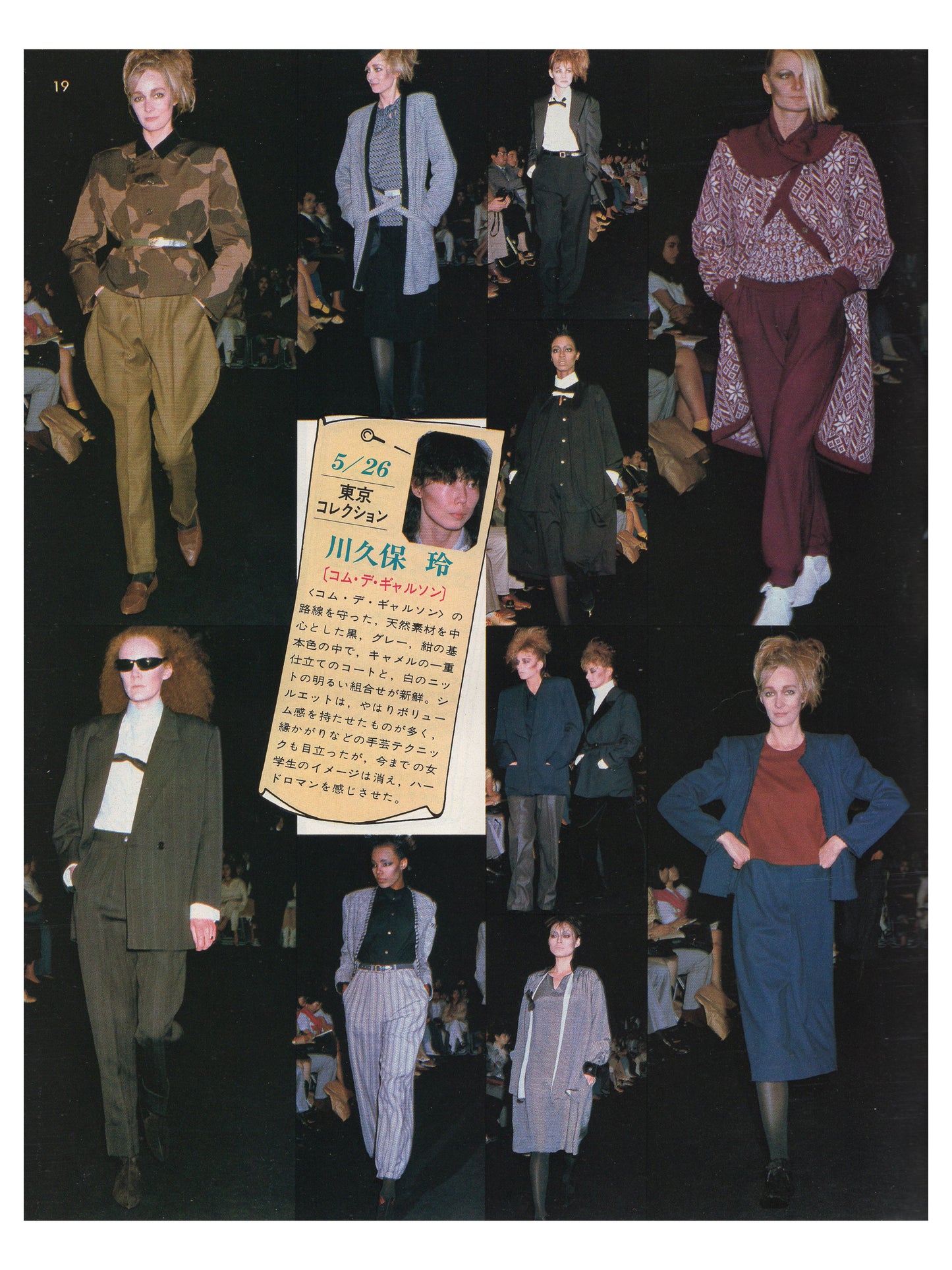1
/
of
2
so-en ∙ sep 1 1980
so-en ∙ sep 1 1980
y's
Regular price
1 CAD
Regular price
Sale price
1 CAD
Unit price
/
per
description
seasonal coverage of the a/w '80 tokyo collections. the honest and critical editorial voice is refreshing to read. as the editor in chief writes, the age of japan's global influence over fashion would be just around the corner with yohji and rei making their paris debuts the following year.
notes
published by bunka publishing bureau
softcover ∙ 20.5 x 26 cm ∙ 2 pp
'80-'81 Autumn / Winter Tokyo Collections
We bring you the '80-'81 Autumn / Winter Tokyo Collections. So-en holds the Tokyo Collection in higher regard than any other collection in the world. Since it is so closely tied to our everyday lives, we wish to nurture and watch over it with warmth, which is the goal of this special feature. Whether it's materials, colors, patterns, or styles, the Tokyo Collection is on par with global fashion collections. We hope that by viewing it, you can sense the future direction of our fashion. The day when Tokyo will influence global fashion is, we believe, just around the corner.
In covering the Tokyo Collection, one thing I felt is that I wanted to see the clothes more straightforwardly. To create a stronger image of the clothes, designers may have chosen to use their own stages, sound, and lighting. However, sometimes the lighting made it difficult to see the clothes well, and the sound was almost noise-like. Another thing that stood out was the repeated use of the same venue. After one show, the stage was quickly dismantled, and a new stage was constructed. I couldn't help but feel that with a little adjustment, the same stage could have been used, which seemed wasteful.
Lastly, I wish there were more Japanese models. It's not just because we're Japanese and wear Japanese clothes, but because it's a show held in Tokyo. While many shows feature only foreign models, it was a delight to see that, in addition to the usual Kansai Yamamoto, designers like Kae Inaba and Sueo Irie, who are both Japanese, featured Japanese models in more than half of the shows. It is heartening to see this trend slowly increasing.
Editor-in-Chief, Masami Shikkou
Yamamoto Yohji (Y's)
Yohji Yamamoto, who is known for his expert use of natural materials, presented an ambitious collection in which he unusually experimented with synthetic fabrics. The primary colors were the usual Y’s tones of black, gray, and navy, but this time, new red and blue floral prints were added, giving the collection a fresh feel. The designs were New Wave-inspired, consisting of mini skirts and slim pants that added a modern edge to the collection.
Kawakubo Rei (Comme des Garçons)
Staying true to the signature style of Comme des Garçons, the collection featured natural materials in basic colors such as black, gray, and navy, with a fresh combination of a camel-colored single-breasted coat and a white knit. The silhouettes were predominantly voluminous, with craft techniques like edging being noticeable. The previous schoolgirl image was replaced, evoking a sense of hard romance.



